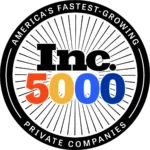Part of the inbound marketing mix mentions an investment in paid advertising. If you’re able to allocate a budget for paid ads are not running paid advertising campaigns, you’re missing out. Great SEO and content can continue to drive visitors to your website, but if you want to get more quality eyeballs to your site quickly, paid advertising is one of the very best ways to do that.
PPC drives big revenue for top brands – from luxury automakers to health insurance companies, PPC is often part of their marketing mix. Paid ads are great because you can easily define a target audience and minimize costs by only paying for actual clicks.
You can also get a better idea of your target market and can use PPC advertising to inform your other marketing channels.
But just having a paid advertising campaign isn’t enough – you need to run your campaign effectively to truly reap the rewards that paid advertising campaigns can provide – so here are the three most important steps towards doing so.
Component 1: Having a Great Ad
Sounds like a no-brainer, but do you really know what goes into crafting a great paid ad? It’s a fine balance and understanding of keywords, different match types, context targeting, bid strategy, quality score, and more. We could (and probably will) write an entire granular series that discusses all of the important elements that go into a great ad.
Regardless, a great ad is where everything starts, and one of the most important part of a high-converting ad is your copy. You have to write razor-sharp, effective ad copy – but here’s the catch, your constantly limited by the amount of characters you can input. Imagine you only get 30 characters for a headline, having to write in an extremely restricted space – often competing with up to 9 other advertisers.
So how can your ad stand out?
Here are three easy ways.
1: Understand The Goal Of Your Customer – If your customer is Googling “best mountain bike for 2017”, chances are they’re already interested in mountain biking. Titling your ad “Interested In Mountain Biking?” isn’t really going to do it. Instead, you should try to understand what you customer wants – not just what they searched.
In this case, a headline like “Buy 2017’s Best Mountain Bike” would likely bring in far more clicks. It directly appeals to what the consumer is looking for, and is written in a way that keeps their actual goal in mind – not an “interest in mountain biking” but a clear desire to find and buy the best mountain bike out there.
2. Incorporate Concrete Numbers – Having fact-based numbers and statistics in your ads can increase the clickthrough rate by up to 88%, and helps increase customer confidence in your product.
3. Use Second Person Copy – aka “You”. That’s your name, that’s my name, and that’s your customer’s name. Using “You” and other second-person forms of address in ads makes them feel more personal, and can increase engagement and clickthroughs.
Component 2: Having a Great Landing Page
Once you get past the first click, you might think your job is done. Not even close. A great paid advertising campaign may start with a good PPC ad, but a great landing page is absolutely mandatory when it comes to actually converting that click to a lead.
Why do you need a landing page instead of simply driving someone to the home page of your website? Odds are, the individual who clicked on your ad had a very specific intent. Landing pages are focused on a single objective that matches the intent of the ad that your visitors clicked on to reach your page.
Here are some of the attributes of top-performing landing pages:
- Relevance – It should immediately be obvious to a consumer why they have arrived at your page. This means it should be completely relevant to the ad text – no misleading text!
- Credibility – You must build up your credibility. Facts, figures, success stories – whatever you’ve got, put it on this page.
- Time Sensitivity – putting a timer on, say, a free downloadable ebook for a limited time can be a way to overcome skepticism and encourage action.
- Persuasive Imagery – The images on a landing page are just as important as the text. Invest in professional, custom-made images that help sell your product.
- Professional Copywriting – Trust us. There’s a difference between what you get from a real agency or a copywriter, and whatever an amateur can put together in ten minutes. They’re professionals for a reason. Let them sell for you.
- A Clear CTA – Your CTA should be immediately clear when a consumer looks at your page. It doesn’t matter what you’re doing – selling a product, giving away an ebook – whatever. If your CTA isn’t clear, your customer will get bored, confused, or otherwise distracted, and will leave.
View the entire 10 point landing page checklist here.
Component 3: Having a Lead Nurturing Strategy
Okay, you made a great ad, and you built a great landing page. Now you’re done, right?
Not so fast. But this is the last step. Once you’ve gotten your clicks on your ad, and converted those consumers to leads, it’s time to nurture them. While we all want to believe we live in a world of one call closes, the reality is prospects receive an average of 10 touches from the time they enter the top of the funnel until they’re a closed-won customer. Lead nurturing is your solution for maintaining touchpoint consistency.
Here are a few benefits of lead nurturing:
- You Establish Contact With Leads Immediately – This can be as simple as a “thank you” email after they sign up for your list or download a file. You can quickly establish a relationship, and become a “known quantity” to that consumer.
- You Maintain Consistent Communication – This means you should send your leads, high quality, interesting content that is relevant to them. This content should be related to whatever it was they initially signed up for – if it isn’t, you risk alienating your consumer.
- You Can Also Use Automation Tools To Nurture Leads (without sacrificing the personal touch) – Automated lead nurturing can save you a lot of time, and can help you maintain engagement efficiently, especially if a customer has shown interest in your products with repeat visits and high email engagement rates. Some great lead nurturing tools are Drip.co and HubSpot.
In Conclusion…
That’s it. Really. No more surprises. You’re done. Well, sort of.
After you build a great ad, a perfect landing page, and a great lead nurturing methodology, you can still improve. A/B test every element of your ad campaign, use tools like Optimizely or Crazy Egg to learn more about your leads, and get a better idea of the market segment you’re working within.
There is alwaysroom for improvement, and if you’re willing to put in the work to refine all of your paid marketing techniques, believe us – it will pay off in the end.









